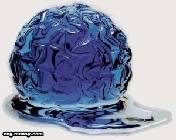CARBON FIBERS AND THEIR APPLICATION IN CIVIL ENGINEERING 2 from 7

Construction composites that are most commonly reinforced with carbon fibers are the class of materials known as carbon fiber reinforced polymers (CFRP), also known as carbon fiber reinforced plastic.
To make a carbon fiber sheet, carbon fiber fabric is saturated or infused with epoxy resins and heated at high temperatures.
Shaped pieces arc made by layering several pieces of fabricover a mold, saturating them with resin and heating it until the resin has infused through all layers.
The polymer used in CFRP is most often epoxy, but other polymers, such as polyester, vinyl ester or nylon, are also sometimes used.
Non-polymer materials can also be used as the matrix for carbon fibers.
Properties of CFRP depend on the layouts of the carbon fiber and the proportion of the carbon fibers relative to the polymer.
Their properties differ so much from that of their matrix material, that a relationship is barely discernible any more .
CFRP materials are distinguished by their extremely high strength and rigidity.
Exceptional durability high resistance to corrosion, low density excellent damping properties and a high resistance to impacts combined with exactly modifiable thermal expansion to complement the complex characteristics profile.
To be specific, it has a very high modulus of elasticity exceeding that of steel; high tensile strength, which may reach 1000 ksi (7 GPa); lowdensity:114 1blli3 (l800 kg/m3) and high chemical inertness.
The main disadvantage of carbon fibers is their catastrophic mode of failure since the carbon fibers are brittle in nature.
Also their relative cost is a big drawback since carbon cost is a high quality material that comes with a price to match.



